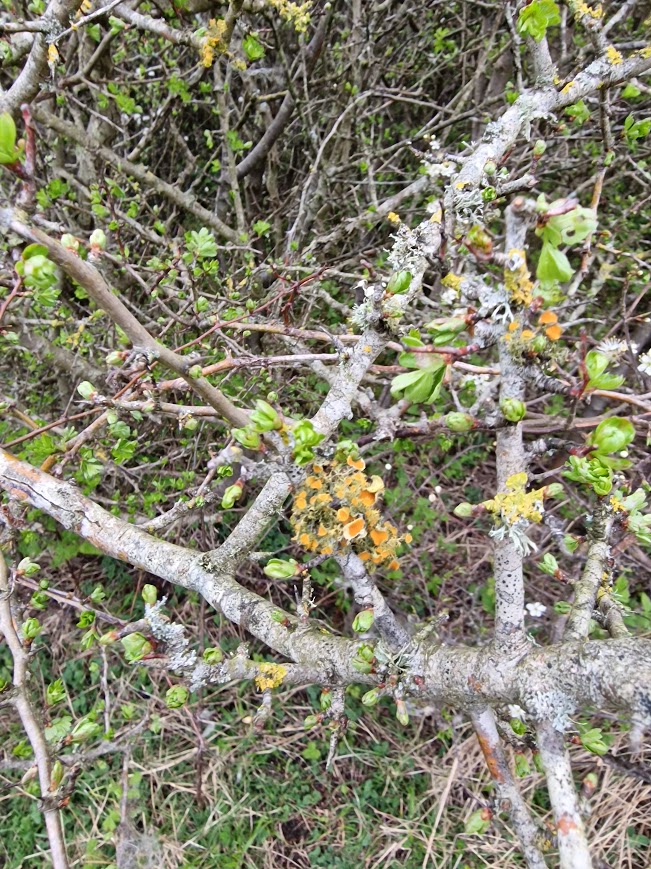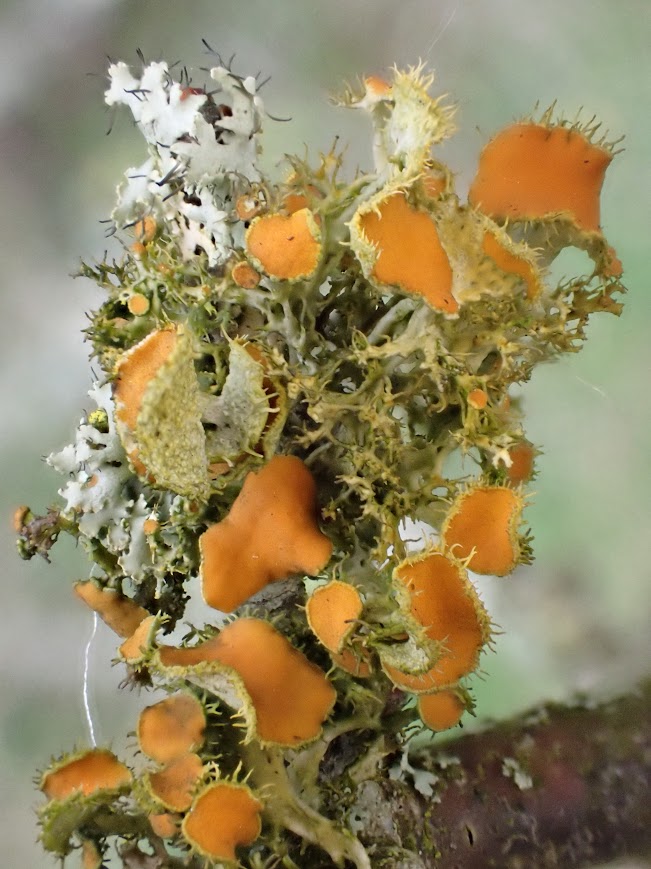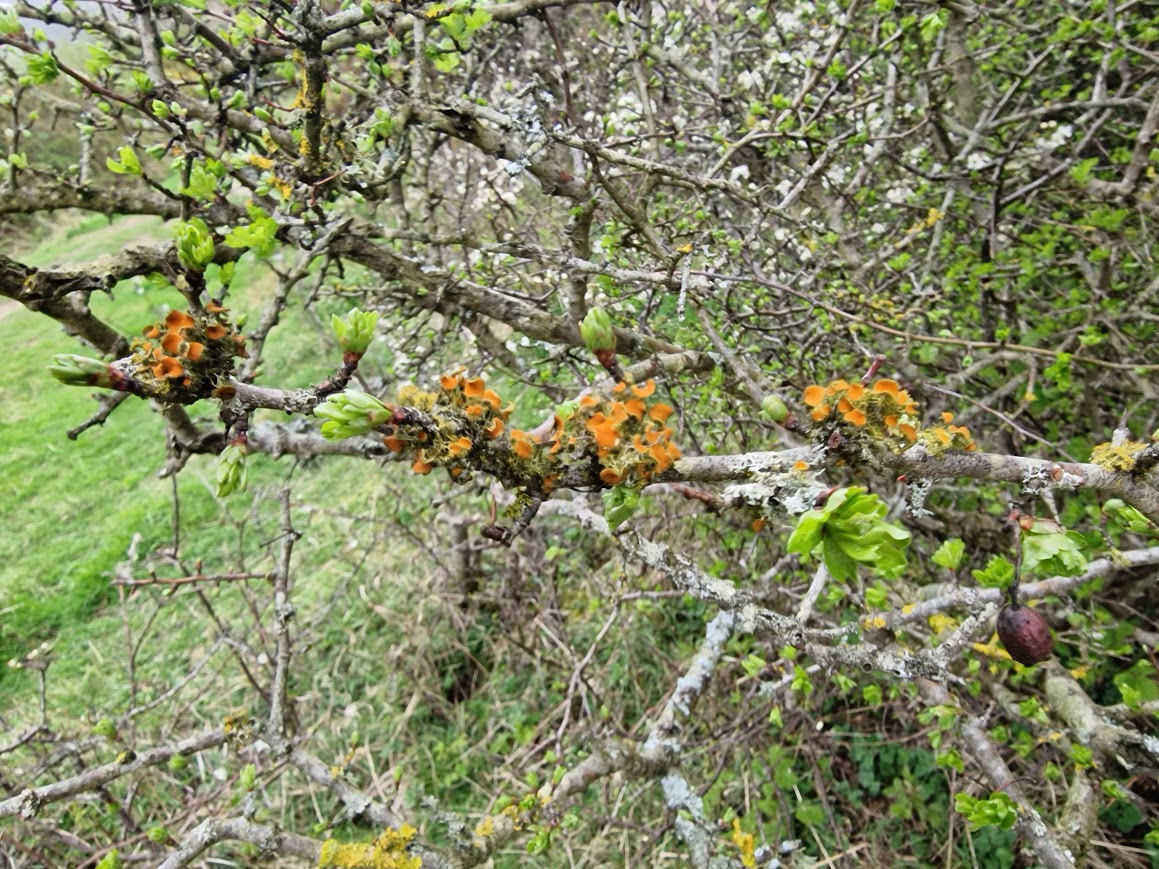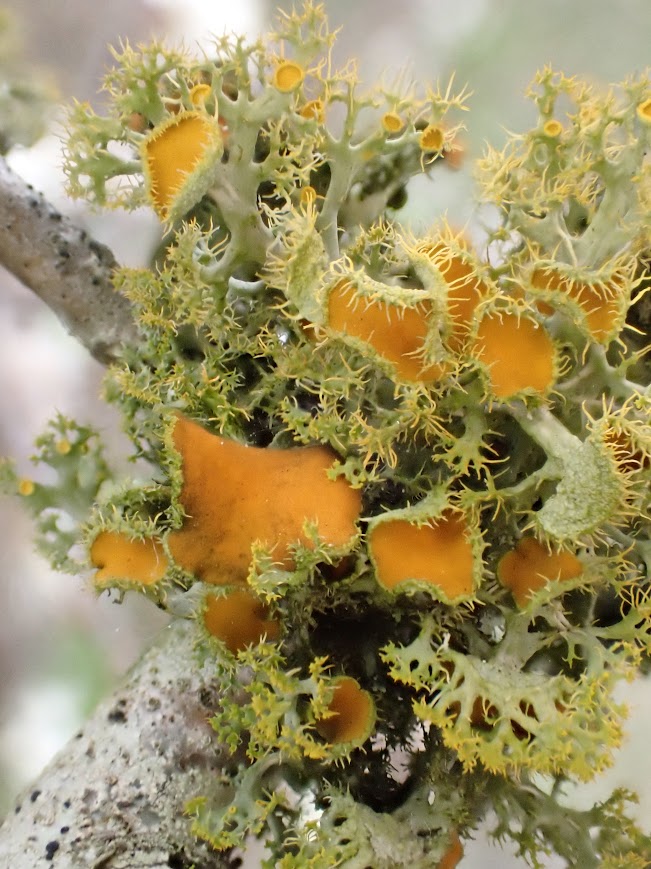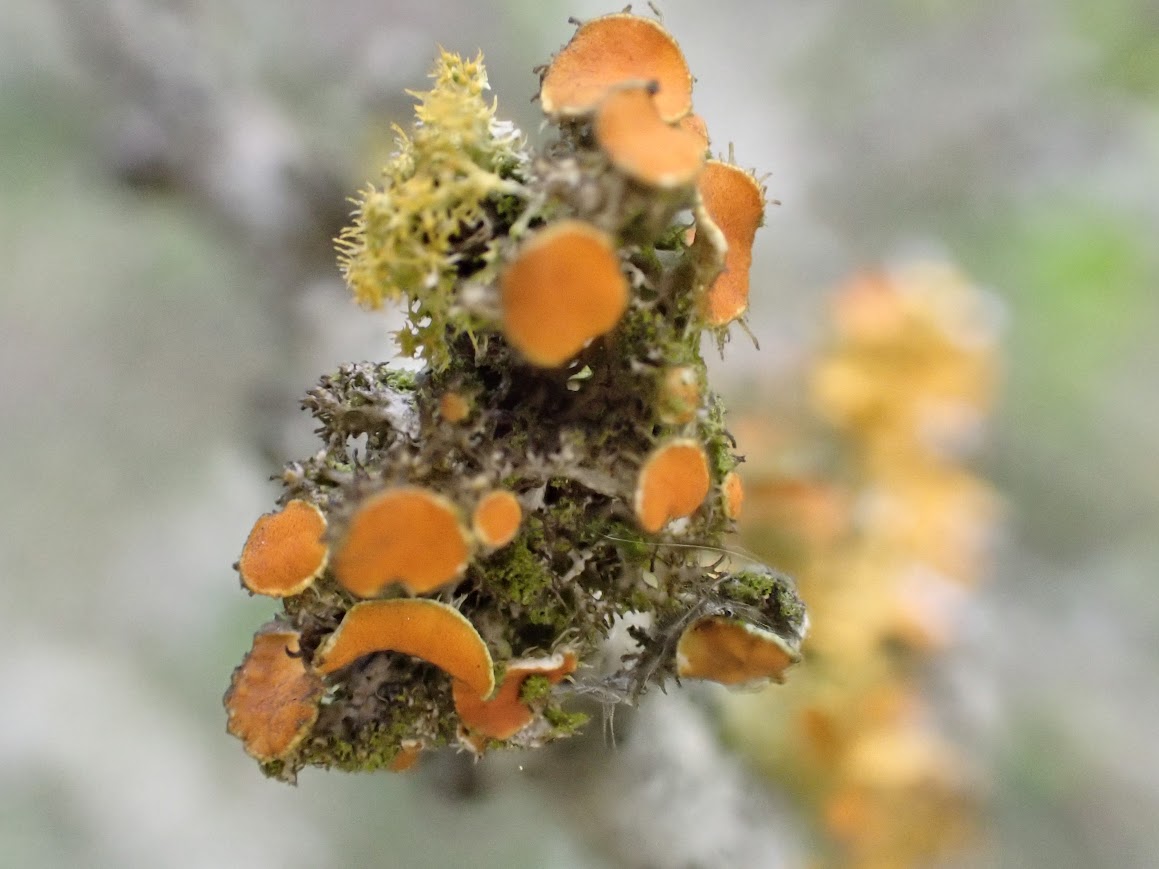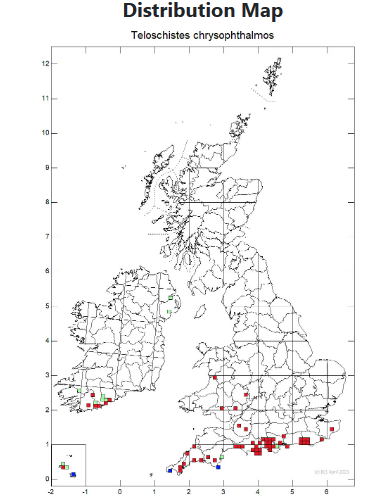
Distribution map from Teloschistes chrysophthalmos | The British Lichen Society
I am not going to give the exact location of this sighting as the British Lichen Society society lists Teloschistes chrysophthalmus as Cr = Critically Endangered (IUCN Red List of Threatened Species); NR = Nationally Rare (i.e. Recorded in 15 or fewer 10 km squares in the United Kingdom) P = Priority Taxon in the UK BAP (Biodiversity Action Plan). However, if you want to find a Golden Eye Lichen if your search Hawthorn trees on the Brighton Downs and along the South Downs to Lewes, and you are likely to find one. If you find one please put it on iRecord Home | iRecord and send you record to the British Lichen Society recorder BLS Recording Scheme | The British Lichen Society Janet Simkin on records@britishlichensociety.org.uk.
All sections of text in italics are quotations, sources sited.
Thallus fruticose, forming tufts, more or less spherical, 1-5 cm diam., lobes flat to slightly convex, 1-2.5 mm wide, radiating from a central point, more or less branched, margin with irregular and abundant spinules. Upper surface yellow to golden orange, lower surface pale yellow tinged-greyish. Apothecia numerous, marginal or near apices, discs to 5 mm diam., with abundant marginal cilia (eye-like, explaining its name: golden eye), discs orange, cilia yellow-orange. Ascopsores ellipsoid, polarilocular, 10-15 x 5-8 µm according to literature; (10) 12-15 (17) x 5-8 (9) µm according to our measurements. Photobiont: Trebouxioid. K+ purple. Magnificent species easy to identify and impossible to mistake with another species. Lichens marins (lichensmaritimes.org)
Over the last two years I have seen four Teloschistes chrysophthalmus. Three on the same Down near Lewes, on Hawthorn, and one on a Hawthorne in a hedge in the Low Weald near Plumpton.
On 06.04.24 I saw twelve in one Hawthorn, on the same Down as the first thee sightings. They were in the third Hawthorn I looked at. I would suspect if you did a systematic survey of Hawthorns on the South Downs there would be 100s if not 1000s of them now. A few of the 12!
